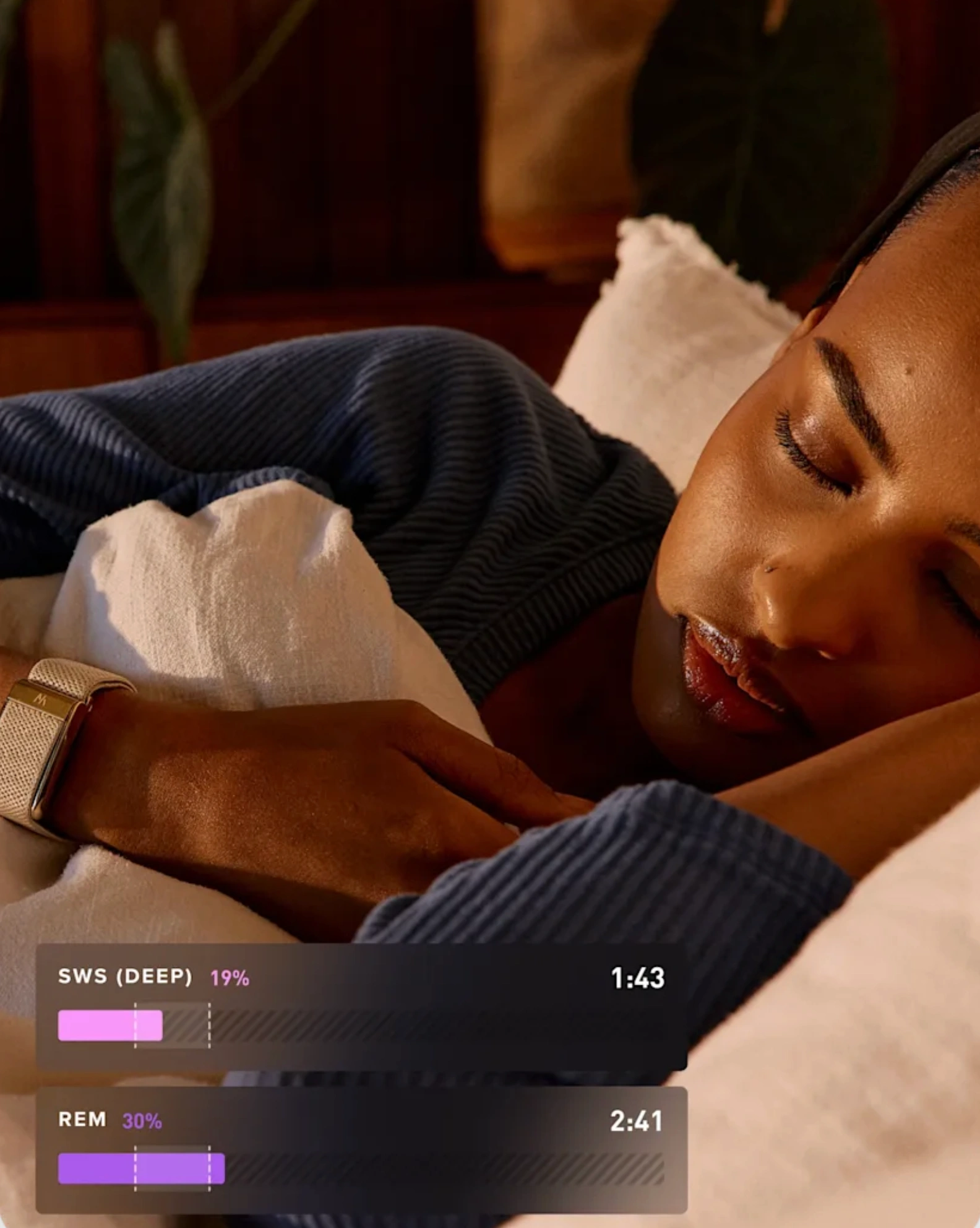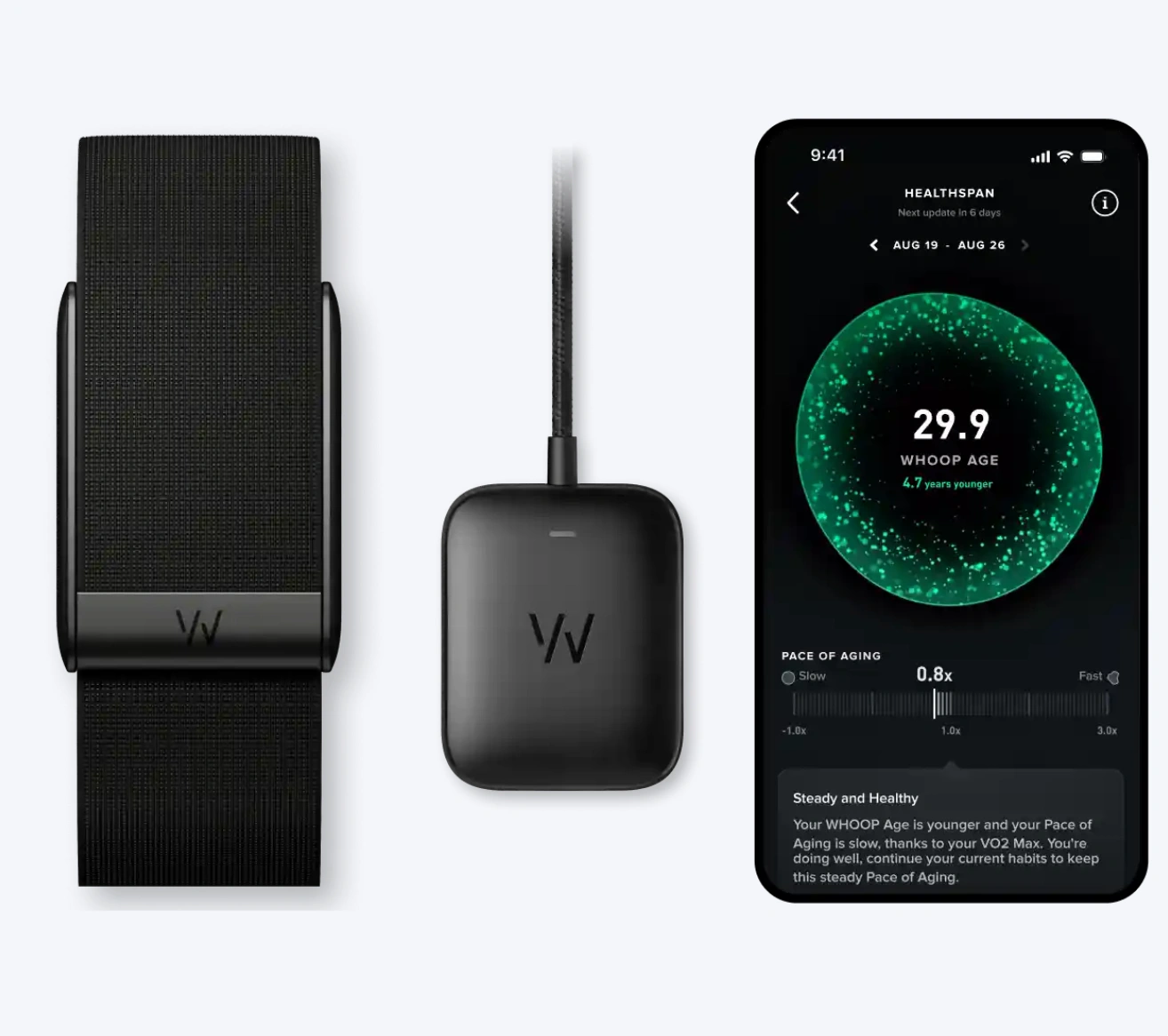The Subscription & Marketing Strategy of Whoop’s Success: The Sleep-as-a-Service Model
Updated on
Published on

When you buy most wearables, you’re buying a device; when you join Whoop, you’re buying a relationship. The strap is nearly invisible, the app is where everything happens, and the core promise is better sleep, recovery, and performance over months and years. That’s the heart of Whoop’s success strategy: sell sleep-as-a-service and recovery-as-a-service through a subscription service, instead of chasing one-off hardware cycles.
- Sleep, strain, and recovery insights are the main “product.”
- Whoop's marketing strategy is built around long-term habit change, not step counts.
At a Glance
- Whoop membership bundles the band, app, sleep/recovery analytics, and coaching into a single subscription service. (WHOOP)
- The latest generation (Whoop 5.0 and MG) comes with three membership tiers: One, Peak, and Life, all including advanced sleep tracking. (Tom’s Guide, Wired)
- Sleep Planner, haptic wake alarms, and “sleep need” scoring make sleep-as-a-service central to the experience. (WHOOP)
- Whoop's marketing strategy targets elite athletes first, then health-obsessed consumers through campaigns like “The Best Obsess.” (WHOOP)
What “Sleep-as-a-Service” Actually Means For Whoop
Sleep-as-a-service at Whoop means your membership is primarily paying for continuous sleep analysis and coaching, not just a sensor on your wrist. The band tracks sleep stages, disturbances, HRV, and sleep time, then turns that into a nightly “sleep performance” score and specific guidance: when to go to bed, when to wake, and how much you need to peak, perform, or get by. The Sleep Planner and haptic alerts make that advice tangible, waking you at the right time based on your goals. (WHOOP, Sleepopolis)
- Sleep coaching reframes Whoop as a coach, not a passive tracker.
- Daily “grades” for sleep and recovery create a natural check-in habit.
- Cancel the subscription, and you lose the ongoing guidance — that’s sleep-as-a-service in practice.

Inside Whoop’s Membership-First Subscription Service
Whoop’s model is membership-first: you pick a plan, and the band comes with it. Membership includes the device, charger, app, and access to Sleep, Strain, Recovery, and Stress analytics, plus coaching features; hardware alone is never the main SKU. With Whoop 5.0 and MG, membership tiers (One, Peak, Life) unlock extra features like Healthspan, stress tracking, and clinical-grade ECG or blood pressure in the highest tier. (WHOOP, Tom’s Guide)
- The subscription service bundles hardware and software, simplifying the pitch.
- New hardware generations become upgrade “rewards” for staying in the ecosystem.
- Recurring membership revenue is more predictable than one-off strap sales.

Sleep Data As The Core of Whoop’s Success Strategy
Whoop can track workouts and strain, but the stickiest value is the way it handles sleep. The Sleep Coach and Planner recommend bedtimes and wake times based on strain, sleep debt, and your chosen goal, then use a silent haptic alarm to wake you at the right moment in your sleep window. Reviewers often describe Whoop as a “sleep tracker, gentle alarm clock, and sleep coach in one,” with metrics that feel more actionable than generic “you slept 7 hours” charts. (WHOOP, Leesa, Velo/Outside)
- Sleep need, sleep debt, and sleep performance turn raw hours into usable guidance.
- Haptic wake alarms make the band part of your morning routine.
- Sleep quality directly feeds into recovery scores, closing the feedback loop.
-1.webp)
Whoop’s Marketing Strategy: Start With Pros, Then Scale Down
Whoop’s marketing strategy deliberately started at the top of the pyramid: pro athletes, military units, and elite teams. By becoming part of training stacks in MLB, NFL, and among Olympians, Whoop built credibility as a “performance lab on your wrist” long before most consumers had heard of it. The 2023 “The Best Obsess” campaign then used legends like Michael Phelps and Virgil van Dijk to reposition the brand as a home for anyone obsessed with improvement, not just genetic freaks. (WHOOP, Plus Company, NoGood)
- Elite adoption helps justify a premium subscription service for everyday users.
- “Obsessed, not gifted” messaging makes high performance feel aspirational and inclusive.
- Whoop's success strategy is to sell a mindset (obsession, discipline) as much as a device.

Content, Education, And The “Obsessed” Persona
Whoop doesn’t just show dashboards; it produces a steady stream of content explaining recovery, HRV, sleep, and stress in plain language. Its blog, podcast, and in-app insights educate members on why last night’s sleep score matters and how to fix it, turning data into coaching. Strategy breakdowns point out that this educational layer is central to Whoop’s marketing strategy because it keeps members engaged and validates the subscription fee. (WHOOP Locker, Medium)
- Content helps members interpret sleep and recovery scores as actionable habits.
- Education reinforces the idea that Whoop is for people serious about improvement.
- Sleep-as-a-service only works if users understand and value the guidance.
.webp)
Community, Comparison, And Behaviour Loops
Whoop’s success strategy leans heavily on community and shareable numbers. Recovery, Strain, and Sleep scores are deliberately simple and colour-coded, making them easy to screenshot, text, or compare inside Teams. Those comparisons create a soft pressure to improve, encouraging members to adjust bedtime, alcohol, or training to see better scores and “beat” their past selves or friends.
- Social comparison makes an abstract subscription service feel more like a game.
- Teams and challenges increase retention by creating shared goals.
- Whoop's marketing strategy relies on members to spread the product via word-of-mouth and screenshots.

Pricing, Tiers, And Perceived Value In A Subscription Service
By 2024–2025, Whoop membership is structured into tiers such as One, Peak, and Life, each unlocking different depth of metrics and hardware. Reviews cite annual pricing roughly in the $199–$359 range, with higher tiers (and Whoop MG) adding ECG, blood pressure insights, and detailed “Healthspan” metrics like Whoop Age. (Wired, The Verge)
- Tiers map to different levels of obsession: performance basics vs longevity vs medical-style insight.
- The subscription service model lets Whoop monetise deeper data without charging everyone for everything.
- Framing tiers around goals (“Peak,” “Life”) ties price to outcomes, not just features.
-1.webp)
Backlash, Upgrades, And The Fragility Of Trust
A membership model also means you live and die by customer trust. When Whoop changed its long-standing promise of free hardware upgrades for members, requiring either an extra 12 months of commitment or an upgrade fee for Whoop 5.0, backlash was immediate. Members who had chosen Whoop over rivals specifically for the “latest hardware included” felt misled, raising questions about whether the subscription service was still worth it. (The Verge, Athletech News)
- Changing upgrade rules can feel like moving the goalposts in a subscription relationship.
- Subscription fatigue plus perceived broken promises risk churn, even with strong product-market fit.
- Whoop's success strategy has to keep proving value to justify rising membership costs.

How Whoop Compares To “Buy-Once” Sleep Trackers
Unlike many wearables where you pay up-front and get basic sleep tracking for free, Whoop inverts the value equation. Reviews consistently note that while rivals like Oura or Apple Watch offer good sleep features, Whoop stands out for its recovery and coaching depth — but at a higher ongoing price. Wired calls Whoop “one of the most comprehensive biometrics” options, while also warning that the subscription makes it the most expensive choice if you just want basic sleep data. (Wired, Leesa)
- Whoop is overkill for casual users who only want nightly hours and a score.
- The model makes sense if you treat sleep and recovery like a serious training variable.
- Sleep-as-a-service has to deliver more than commodity sleep graphs to compete.
Lessons From Whoop’s Sleep-as-a-Service Playbook
The core lesson from Whoop’s success strategy is simple: recurring revenue must be anchored in recurring transformation. Sleep-as-a-service works here because the product, subscription service, and brand story all tell you the same thing — better nights and smarter training are an ongoing project, not a one-time purchase. Whoop's marketing strategy, from elite athlete campaigns to education and teams, is built to reinforce that narrative and keep members feeling like they’re in a long-term program, not just renting a strap.
- Charge subscription prices only if you can deliver subscription-level change.
- Build for a narrow, highly engaged audience first, then scale outward.
- Treat data as raw material and coaching as the finished product people pay for.
FAQ
What is Whoop?
Whoop is a membership-based wearable platform that tracks sleep, strain, recovery, and stress, with the band included as part of a recurring subscription.
How does Whoop’s subscription service work?
You pay an annual or multi-year membership that includes the Whoop device, app access, and ongoing analytics and coaching; cancel the membership and you lose access to most insights.
Is Whoop an ideal option for efffective sleep tracking?
Yes, Whoop is widely rated as one of the strongest sleep trackers thanks to detailed sleep staging, sleep need calculations, and a Sleep Coach with smart haptic alarms.
Why does Whoop charge a subscription instead of a one-time device fee?
Whoop’s success strategy is built around sleep-as-a-service and recovery coaching, so it monetises continuous analysis and guidance rather than hardware margins.
Who is Whoop best suited for?
Whoop is best for athletes and health-obsessed users who will actively use deep sleep, recovery, and strain insights to change training and lifestyle, rather than casual step counters.







